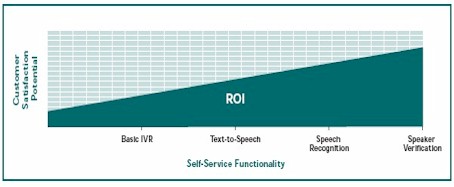|
|


IVR Solution
This section of our technical library presents information and documentation relating to IVR Development and custom IVR software and products.
Business phone systems and toll free answering systems (generally 800 numbers and their equivalent) are very popular for service and sales organizations, allowing customers and prospects to call your organization anywhere in the country.
The PACER and WIZARD IVR System is just one of many DSC call center phone system features..
What Is IVR?. An Interactive Voice Response (IVR) processes inbound phone calls, plays recorded messages including information extracted from databases and the internet, and potentially routes calls to either inhouse service agents or transfers the caller to an outside extension.
Contact DSC today. to learn more about our IVR services and IVR application development software.
Why Customers Hate Your IVR System
Page 4
Are you using outdated technology?
Whether customers respond negatively or positively to self-service applications often
depends on what state of the art your IVR system displays. The most basic form of
IVR uses recorded voice prompts to instruct the caller, then allows the caller to select
options and enter information by pressing keys on the touch-tone keypad. This basic
technology is suitable for only the most elementary transactions, and if you’re trying
to use it for more complex transactions, you’re probably annoying your customers.
IVR technology has advanced significantly over the last few years, and features such
as text-to-speech, speech recognition, and speaker verification now make it possible
to create powerful self-service applications that allow customers to conveniently
conduct business in ways that earlier IVR technology can’t support.

Even the simplest customer self-service applications have the potential for significant short-term
return on investment while satisfying customer expectations.The more functionality you add, the
greater the potential for delighted customers and ROI that exceeds your expectations.
Are you using the technology ineffectively?
Any technology can be misused, from the simplest to the most advanced. Here are
some practical tips to help you patch up the relationship between your customers
and your IVR system, whether you’re using basic technology or the latest innovations.
Basic IVR tips
The following best practices work whether you’re using a basic IVR system or one
with advanced functionality.
- Understand your users: If you have many different levels of proficiency among
users, consider having different prompting levels to meet their different needs,
allowing users to self-identify their level of proficiency.
- Offer introductions for new users.
- Allow experienced users to make selections without having to listen to all
messages.
- Include agents and customer service reps on your design team, and prototype
and test with users at varying proficiency levels.
- Keep the application as flat as possible. Keep menu choices to between 3 and 4
wherever you can.
- Flow-chart your application structure to ensure that branches are relatively
consistent in length.
- Announce the menu function first, and then tell what key activates it. Tell users
early how to navigate around the system and how to get help.
- Present the most important or commonly selected items first.
- Keep messages short, and place verbal emphasis on keywords.
- Use silence to convey structure: short pauses between menu items and slightly
longer pauses between menus. Avoid long pauses, as they will confuse users.
- Use careful wording, tone of voice, audible tones, and logical sequences of information
to convey context and structure. Prompts should be short but not terse.
- Read prompts aloud before implementing to uncover awkward or ambiguous phrases.
- Confirm choices verbally so users are confident and understand where they’re
being taken.
- Ensure that users are able to go back to previous menus as well as to the main
menu from anywhere in the menu structure.
- Consciously shape your system’s personality or identity. Select a voice that is both
welcoming and confident, expressive or “perky” rather than monotonous or dull,
and use logical criteria to decide whether to use a male or female voice.
Page
[1]
[2]
[3]
[4]
[5]
[6]
Next Page
Contact DSC today. to learn more about our IVR services and IVR application development software.
|




